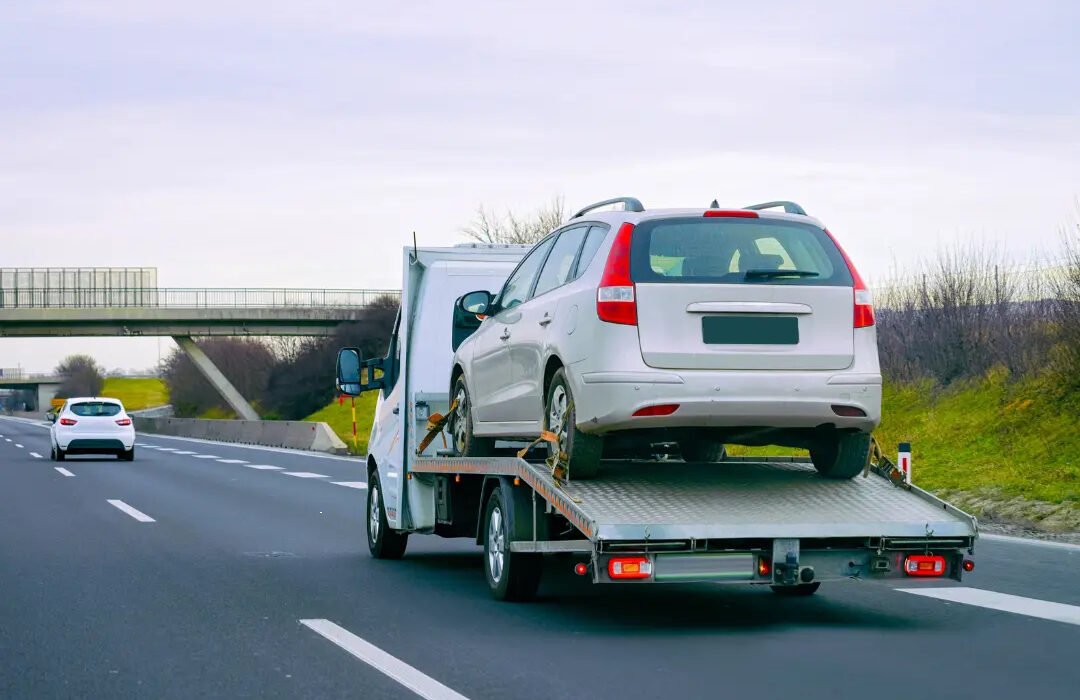Open carrier car shipping is a popular and cost-effective method for transporting vehicles. However, many potential customers have concerns about the safety and reliability of this service. Understanding what to expect can help alleviate these worries and ensure a smooth shipping process. This comprehensive guide will delve into the aspects of safety, reliability, and best practices for open carrier car shipping.
What is Open Carrier Car Shipping?
Understanding the Basics
Open carrier car shipping involves transporting vehicles on an open trailer, typically capable of carrying up to 10 cars at once. These carriers are commonly seen on highways and are favored for their affordability and efficiency.
How It Works
The process begins with booking a shipment with a car transport company. Your vehicle is then loaded onto an open trailer, securely fastened, and transported to its destination. Upon arrival, the car is unloaded and ready for pickup or delivery.
Safety of Open Carrier Car Shipping
Vehicle Protection Measures
Secure Loading and Unloading
Professional car transport companies employ trained personnel to handle the loading and unloading of vehicles. This ensures that your car is securely fastened using straps and braces to prevent movement during transit.
Regular Inspections and Maintenance
Open carriers undergo regular inspections and maintenance checks to ensure they are in optimal condition. This includes checking the integrity of the trailer, tire conditions, and the functionality of the securing mechanisms.
Weather and Road Conditions
Exposure to Elements
One of the main concerns with open carrier shipping is exposure to weather elements such as rain, snow, and dust. While this exposure is a factor, it is typically minimal and comparable to everyday driving conditions.
Road Debris
Vehicles on open carriers may encounter road debris. However, the risk is relatively low, and drivers are trained to take routes that minimize exposure to such hazards. Additionally, the vehicles are positioned strategically to reduce the likelihood of damage.
Insurance Coverage
Basic Coverage
Most car shipping companies provide basic insurance coverage for vehicles in transit. This coverage usually includes protection against damages incurred during loading, unloading, and transit.
Additional Insurance Options
Customers have the option to purchase additional insurance for extra peace of mind. This can cover a wider range of potential damages and offer higher compensation limits.
Reliability of Open Carrier Car Shipping
Choosing a Reputable Company
Research and Reviews
Selecting a reliable car transport company is crucial. Research companies thoroughly, read customer reviews, and check their ratings with the Better Business Bureau (BBB) and other reputable sources.
Licensing and Certification
Ensure that the company is licensed and registered with the Department of Transportation (DOT). Licensed companies are required to meet specific safety and operational standards.
Timeliness and Communication
Accurate Scheduling
Reliable car transport companies provide accurate scheduling information and keep customers informed about the expected delivery timeline. Delays can occur due to unforeseen circumstances, but reputable companies communicate promptly to keep customers updated.
Tracking and Updates
Many companies offer tracking services, allowing customers to monitor the progress of their shipment in real-time. Regular updates via phone, email, or app notifications provide additional reassurance.
Preparing Your Vehicle for Open Carrier Shipping
Pre-Shipping Inspection
Documenting Condition
Before shipping, conduct a thorough inspection of your vehicle and document its condition with photos. Note any existing dents, scratches, or other damages. This documentation is essential for insurance purposes in case any issues arise during transit.
Removing Personal Items
Remove all personal items from your vehicle. Not only can they shift during transit and cause damage, but they are also typically not covered by insurance.
Maintenance Check
Fluid Levels and Battery
Ensure all fluid levels are adequate, and the battery is fully charged. Address any leaks, as these can pose a hazard during transport.
Tire Pressure
Check and inflate tires to the recommended pressure. Properly inflated tires help secure the vehicle during loading and unloading.
Best Practices During Shipping
Communication with the Carrier
Providing Accurate Information
Provide the transport company with accurate information about your vehicle, including its make, model, and any modifications. This ensures they are adequately prepared for loading and securing your car.
Contact Information
Ensure that the carrier has your correct contact information and that you are available to answer calls or messages during the shipping period. Clear communication helps prevent delays and misunderstandings.
Receiving Your Vehicle
Post-Delivery Inspection
Upon delivery, inspect your vehicle thoroughly to ensure it arrived in the same condition as when it was loaded. Use the photos taken during the pre-shipping inspection as a reference.
Addressing Issues
If you notice any damage or discrepancies, document them immediately and report them to the transport company. Prompt reporting is crucial for insurance claims and resolving any issues.
Common Concerns and Misconceptions
Misconception: Open Carriers Are Unsafe
While open carriers expose vehicles to the elements, the actual risk of significant damage is minimal. Professional transport companies take numerous precautions to protect your vehicle during transit.
Concern: Delays in Delivery
While delays can occur, reputable companies strive to deliver vehicles on time and provide timely updates to keep customers informed. Choosing a reliable transport company mitigates this concern.
Environmental Impact of Open Carrier Shipping
Fuel Efficiency
Open carrier transport is often more fuel-efficient than driving multiple vehicles individually, reducing the overall carbon footprint. Consolidating multiple vehicles onto one trailer maximizes fuel usage efficiency.
Eco-Friendly Practices
Many car transport companies are adopting eco-friendly practices, such as using fuel-efficient trucks and optimizing routes to minimize emissions. Supporting companies with green initiatives contributes to a more sustainable industry.
Conclusion
Open carrier car shipping offers a safe, reliable, and cost-effective method for transporting vehicles. By understanding the safety measures, reliability factors, and best practices involved, customers can make informed decisions and enjoy a smooth shipping experience. Choosing a reputable transport company, preparing your vehicle properly, and staying informed throughout the process ensures that your car arrives safely and on time. As the car shipping industry continues to evolve, open carrier transport remains a trusted and efficient option for vehicle transportation.


